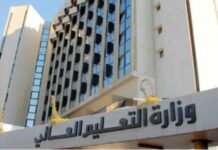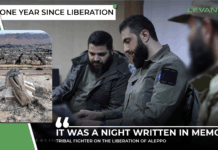
The Syrian government and the Kurdish-led Syrian Democratic Forces (SDF) have begun implementing a landmark agreement in Aleppo, marking a new phase of cooperation aimed at de-escalating tensions and integrating key institutions in the war-torn city.
The deal, signed April 1, calls for the phased withdrawal of SDF military units from the predominantly Kurdish neighborhoods of Sheikh Maqsoud and Ashrafieh in northern Aleppo. Internal Security Forces (Asayish), the civilian security wing of the Autonomous Administration of North Eastern Syria (AANES), have taken over security duties in the area.
Ilham Ahmad, AANES co-chair of the Foreign Relations Department, called the agreement a “positive step” and a potential model for future power-sharing arrangements across Syria. “This is a new experience for the country,” she said, adding that it could help end years of conflict and lay the groundwork for a decentralized Syrian state.
The agreement, which includes 14 clauses, mandates prisoner exchanges, the integration of civilian personnel into the central government’s Interior Ministry, and the preservation of the Kurdish-majority neighborhoods’ “cultural identity.” The Syrian government has already exchanged more than 200 detainees with the SDF, and military convoys have begun relocating SDF fighters to northeastern Syria.
Aleppo Media Directorate head Abdulkarim Laila confirmed that the People’s Protection Units (YPG) and Women’s Protection Units (YPJ), core components of the SDF, are among the withdrawing forces. The Asayish will remain in the neighborhoods with light arms and be integrated into Syria’s Ministry of Interior.
The neighborhoods will retain their existing local councils under a civil coordination mechanism with Aleppo’s provincial government. Ahmad said resource-sharing will occur through joint committees to ensure public services continue uninterrupted.
While hailed as a breakthrough, analysts say the agreement faces challenges. Some SDF-affiliated factions, including the PKK-linked Revolutionary Youth Movement (TCS), accused of human rights violations, including numerous abductions of children, reportedly oppose full withdrawal and may attempt to obstruct implementation.
Despite this, Syrian officials insist the agreement is progressing. Aleppo Governor Azzam al-Gharib said the deal has already boosted public morale and security. “Residents are seeing real improvements on the ground,” he told state media, citing enhanced patrols, activated police stations, and a gradual return of basic services.
The agreement is considered a test case for a broader national deal signed in March between Syrian President Ahmad al-Sharaa and SDF commander Mazloum Abdi. That plan envisions integrating all SDF civil and military institutions into the Syrian state.
Ahmad and other SDF officials have urged Damascus to extend the agreement to other contested areas, including Afrin, Ras al-Ain, and Tal Abyad. “We want a peaceful resolution for all regions,” Ahmad said, warning against continued demographic shifts in Kurdish areas. For now, Aleppo’s neighborhoods offer a rare glimpse of cooperation in a fragmented country, as both sides cautiously test the waters of reconciliation.









